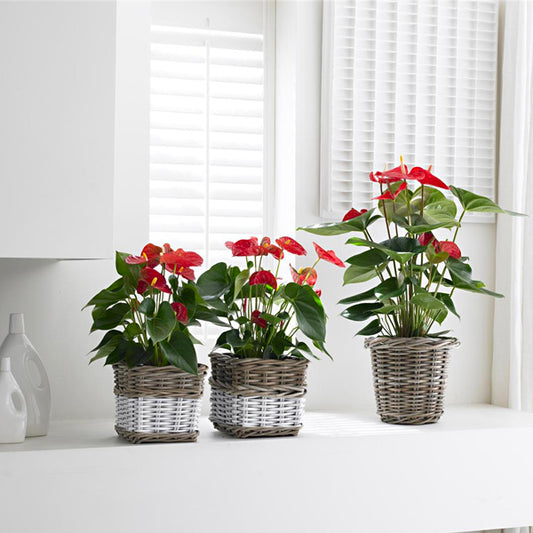Vanda orchids are a family of epiphytic, monopodial orchids with some 50 odd species that are found exclusively in tropical and sub-tropical Asia. With the recent inclusion of Neofinetia, Christensonia and the Ascocentrums along with Aerides flabellata based on DNA studies, the number of species is bound to increase.
Light : Most vandas in nature are exposed to a fair amount of light since they are found on trees at the edges of branches or where the trees are not too dense. Those of you who have greenhouses need to have netting that allows 50-60% of light to pass through. For those who do not have a greenhouse, an east or west-facing balcony that receives about 2-3 hours of direct sunlight should do the job; however, some vandas require that light on both the surfaces of the plants equally for the plant to bloom. Hybrids of spring-blooming ascocentrums with autumn-blooming vandas are usually not fussy about their light requirements and have a longer blooming period often blooming multiple times in a year.
Water : Vandas, need plenty of water throughout the year. Vandas are found naturally in the coastal areas, and the North East of India which receives high amounts of rainfall which are ideal places for growing vandas. Vandas will still need to be watered at least twice daily until their roots turn green. Roots of vandas which get saturated with water turn green. In this state, a vanda cannot take in more water; therefore, it is imperative that the roots turn white, indicating that all the water has been taken up by the leaves before they are watered again. This rule has to be followed in all places. The leaves of a vanda that has an adequate amount of water in its tissues will stay open and feel firm to the touch in contrast to a dehydrated plant that will develop wrinkles and close up. Ensure that your plants are dry by nightfall.
Temperature : Most vandas grow ideally at a temperature range between 20-35 degrees Celsius. They can tolerate temperatures 5 degrees above and below this range without problems. Beyond that they begin to show signs of stress and most will go into dormancy. Some of the sub-Himalayan species like Vanda coerulea and Vanda cristata can tolerate cold better than their tropical cousins. In hot climates, heat can be controlled by increasing air movement as well as watering plants during the hottest part of the day. Cold protection can be provided by moving your plants indoors if you have only a few, or by wrapping polythene sheets around your greenhouse to keep the cold winds out. Watering should also be reduced if it gets considerably cold.
Humidity : Vandas enjoy being in a humid climate much more than other orchids for the simple reason that they do not have any water storage organs like pseudobulbs and due to this might not perform well in low humidity zones. In such places, arrangements to increase humidity with misting arrangements may be required. Alternatively, vandas can be mounted on the lower branches of a tree in a garden where the humidity is provided by transpiration from the tree. A humid environment also requires a lot of air movement which can be provided using fans if it is not naturally available.
Potting and Fertilizer : In high-humidity areas, vandas can be grown bare root if they can be provided adequate amounts of water during the hottest months. In low-humidity regions, it is better to pot vandas up in well-aerated containers or wooden slat baskets with very coarse, water retaining media and keep them suspended. Fertilizing can be done using HighGrow once every fifth watering. For adult plants, a bloom fertilizer HighBloom can be given once a month, by mixing in water, just like watering, i.e. until the roots turn green.

